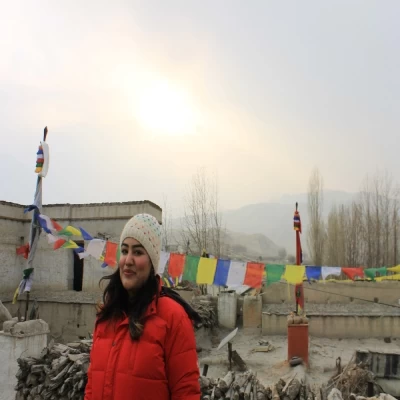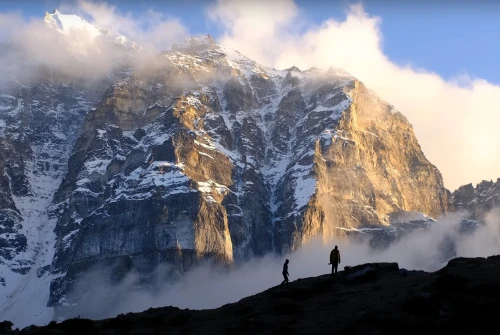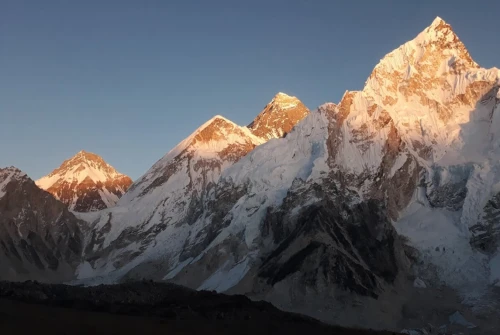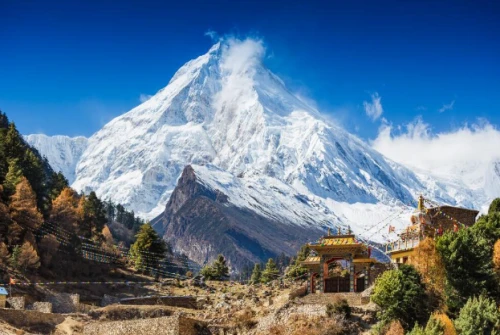The Annapurna Circuit Trek, regarded as one of the world's best treks, has long-drawn adventurers looking for a taste of Himalayan magic. This 128-mile (206-kilometer) trek covers Nepal's Annapurna Massif, providing a memorable trip that blends cultural immersion, biodiversity, and breathtaking beauty. However, the route has seen significant modifications over the years. These changes are the result of better infrastructure, regulation of the environment, and a rise in trekkers, all of which have had an impact on various aspects of the traditional experience. This blog looks into the history of the Annapurna Circuit Trek, including route modifications, cultural influences, and evolution.
The Origins of the Annapurna Circuit Trek
The Annapurna Circuit was originally made available to trekkers in the 1970s. After a while, the area became well-known for its diverse terrain, elevation, and cultural immersion. Before, trekkers saw the trek as a difficult experience. They had no comprehensive maps or established tea establishments.
Traditionally, the circuit extended from Besisahar to Nayapul, passing through a variety of environments, including subtropical woods and alpine highlands. Trekkers had to be largely self-sufficient at the time, bringing food and camping gear because lodging options were limited.
The circuit obtained worldwide recognition in the 1980s and 1990s, driving the development of new facilities and an increase in organized trekking groups. Local communities benefited from the flow of trekkers by establishing teahouses, hotels, and restaurants, creating a reliable infrastructure that allowed hikers to carry lighter packs.
Route Changes: From Remote Trails to Developed Paths
One of the major improvements to the Annapurna Circuit throughout the years has been the construction of roadways. For much of the original route's existence, it was a remote trail accessible only by foot.
However, starting in the early 2000s, road development began in response to local demand for improved access to markets, schools, and healthcare services. These roads have changed the trek's beauty and character, particularly on the eastern side of the circuit.
Lower Circuit Roads:
The eastern part of the circuit, from Besisahar to Chame, has now been replaced by a motorable road. What was once a scenic and remote stretch, requiring days to complete, can now be covered in a few hours by jeep or motorbike. Many trekkers skip this section and start from Chame, cutting down the overall trek distance but missing out on a gradual acclimatization process.
Jomsom Road:
On the western side, a road was built from Jomsom via Kagbeni to Muktinath, another popular leg of the circuit. This development modified the character of this section, as hikers now share the path with vehicles. Some sections are dusty due to increased traffic, leading people to seek alternative hiking routes or modes of transportation, such as flying from Jomsom to Pokhara, to avoid this area of the circuit.
Alternate Routes:
To mitigate the impact of road development, new trekking routes have been established. For instance, the “New Annapurna Trekking Trails” (NATT) provides alternate pathways that veer away from roads, keeping trekkers on quieter, scenic paths. These trails are marked, allowing trekkers to bypass the road sections and recapture the remote beauty of the circuit.
The Evolving Trekking Experience
While numerous sections of the Annapurna Circuit have been altered, the trek's heart remains unchanged. The route continues, taking hikers from lush subtropical trees at lower levels to the alpine views of the Thorong La Pass at 5,416 meters (17,769 ft). Other developments, such as improved lodging and facilities, as well as a greater emphasis on environmentally responsible tourism, have all helped to alter the experience.
Lodging and Amenities:
In the 1970s and 1980s, most trekkers tented along the way. Tea cafes and cottages now line almost every section of the circuit. Trekking the circuit is now more accessible to a wider audience, with accommodations ranging from basic cabins to more pleasing lodges with heated baths. Increased accessibility has resulted in more tourists, but it has also enabled more structured and comfortable excursions.
Eco-Tourism Initiatives:
With rising foot traffic and environmental damage, there is a drive for eco-tourism in the Annapurna Region. Local organizations, such as the Annapurna Conservation Area Project (ACAP), aim to teach both residents and visitors about management, water conservation, and environmental stewardship.
ACAP also regulates the amount of trekking permits issued, promoting sustainable tourism by urging hikers to stick to established trails and respect local cultures and habitats.
Internet and Connectivity:
In earlier years, climbing the Annapurna Circuit meant completely disconnecting from the outside world. Today, accessibility has improved, with Wi-Fi provided in many lodges and increased cell phone coverage. While some hikers like being able to stay in touch with loved ones, others believe it reduces the immersion experience of being in faraway nature.
Cultural Aspects: A Diverse Tapestry of Heritage
The Annapurna Circuit passes through several ethnic populations, including Gurung, Manangi, and Thakali villages. These settlements have adapted to the increasing number of trekkers, combining hospitality with traditional livelihoods. However, modifications in the walk route and growing modernization have altered how these communities engage with hikers.
Religious Sites and Festivals:
The circuit’s route takes trekkers through culturally significant sites, such as the Muktinath Temple, an important pilgrimage site for both Hindus and Buddhists. The route is also home to various festivals, like the lively Tihar festival, celebrated by the local Gurung community, where trekkers are often invited to participate in local customs.
Tourism’s Influence on Culture:
While tourism has brought economic benefits, it has also introduced external influences, especially in younger generations who now have access to education and job opportunities outside traditional vocations. Many locals have learned English and even foreign languages to cater to tourists. As a result, the Annapurna region is a blend of the old and new, with traditional customs mingling with the modern tourism industry.
Major Trek Highlights and Issues Today
Today, you can trek a variety of routes on the Annapurna Circuit. Whether trekking in the shorter route heading out from Chame or the full loop trail, below are a number of the highlights and challenges trekkers face:
Thorong La Pass:
Reaching the highest point of the trek, Thorong La Pass is a big achievement for trekkers. The high altitude, bad air, and horrible weather can make reaching the pass a nightmare. Though the pass offers rewarding views of the Annapurna and Dhaulagiri ranges, it does require proper acclimatization and preparations for altitude sickness.
Manang:
Manang is another village (3,519 m) and acclimatization stop. Trekkers can experience the Tibetan-infused culture, visit the monumental monasteries, and can also take day hikes to Gangapurna Lake and Ice Lake. Manang is gaining popularity hence the increased number of tea houses; however, it still remains a town of yesteryear.
Muktinath Temple:
The Muktinath Temple is a pilgrimage place that frees your need for Hindus and Buddhas, which lies on the circuit. Connected to the temple were 108 water spouts with flames, representing spiritual and purification matters. Simultaneously, its cultural value along the place itself makes it one of the most well-searched places among several trekkers.
Weather and Altitude Challenges
The complaints range from winds, rain, snow, fog, and storms which make the weather conditions on the Annapurna Circuit quite the opposite of hospitable. This stems from the presence of winters which extend from bulge October to bulge May due to the high altitudes experienced along the trek. For such adventurous people who enjoy trekking, the prettiest periods to go to the site are during the spring seasons (March to May), and autumn (September).
Nevertheless, the cyclones and the resultant snowfall in the winter do change the landscape in the circuit, the area has some kind of landscape throughout the year if the foliage goes dormant in the winter. This is made worse by thunderstorms and rainfall during the summer monsoon season, together with the trails becoming slushy. As is the case with most of the mountains in the region, there is a distinct cold and frostbite when temperatures plunge to freezing levels which comes with the winter period.
Chronic mountain sickness is however another specter to contend with though. The perspective is exacerbated for people around Thorong La Pass which is a hard challenge, in terms of altitude and strength. To reduce the extent of damage of this unfortunate reality, it is advisable to take baby crosses and stretch the time it takes to cross this area until it is easy to do so, by picking the pace slightly and resting a bit longer than normal.
The Future of the Annapurna Circuit
The Annapurna Circuit has gone through a lot of changes in the past and will keep changing in the next decades as more infrastructures are set up and eco-tourism picks up. Given the increasing global demand for sustainable tourism, the need to protect the circuit and its cultural heritage becomes even more important.
Since the number of people trekking the Annapurna Circuit is only going to increase, policies to control waste, manage the quality of paths and routes as well as deal with local populations are likely to be implemented with the appropriate degree of intensity. Even though there have been changes in the routes of the Annapurna Circuit, the main reason people trek is because of the captivating scenery, distinctive ecological systems, and the hospitality of the people living in the mountains.
The Annapurna Circuit is for those craving adventure laced with elements of history, nature, and culture and it does not disappoint as it continues to evolve with time and yet retains aspects that have contributed to its status as one of the most popular trekking routes in the world.



